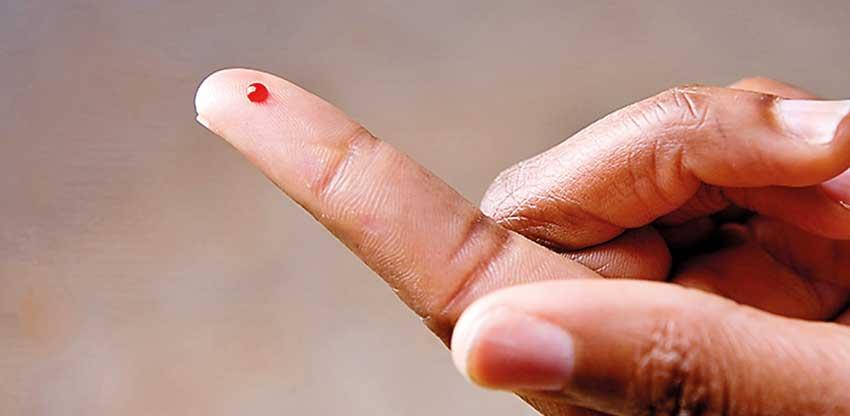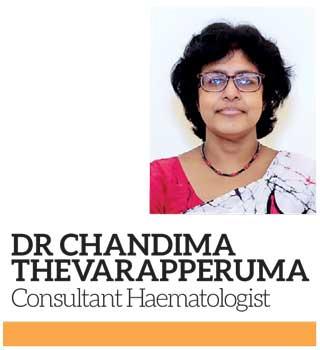Reply To:
Name - Reply Comment

 World Heamophilia Day falls on April 17 every year with a motive of bringing the community with bleeding disorders together.
World Heamophilia Day falls on April 17 every year with a motive of bringing the community with bleeding disorders together.
The theme for this year -‘Adapting to change: sustaining care in a new world’ highlights the importance of creating a platform to overcome new challenges faced by affected individuals during the COVID-19 pandemic.
A rare bleeding disorder
Haemophilia is an inherited bleeding disorder, caused by the absence of certain proteins, required for blood clotting, which results in sudden spontaneous bleeding or bleeding following trauma.
 “The normal genetic pattern in humans is created in such a way that males have one X and one Y chromosome (XY) and females have two X chromosomes (XX). Males inherit X chromosome from their mothers and Y chromosome from their fathers while females inherit one X chromosome from each parent.
“The normal genetic pattern in humans is created in such a way that males have one X and one Y chromosome (XY) and females have two X chromosomes (XX). Males inherit X chromosome from their mothers and Y chromosome from their fathers while females inherit one X chromosome from each parent.
“One of the genes responsible in producing proteins necessary for blood clotting, located in X Chromosome gets mutated, resulting in defective coagulation” explains Dr Chandima Thevarapperuma, Consultant Haematologist.
Women with the hemophilia gene are called carriers and even though they might not have the symptoms of the condition, pathology can pass on to children. In fact, for each child, born, there is a 50% chance that a son will have hemophilia and a 50% chance that a daughter will carry the gene. On the other hand, when the father has hemophilia, none of the sons will have hemophilia even though all the daughters will carry the hemophilia gene.
Another type of hemophilia called Sporadic Haemophilia (30%) can occur even without a family history.
There are 2 types of Haemophilia.
In both types, blood clotting takes more time than normal.
Presentation and complications
“There are many undiagnosed patients with mild haemophilia who only get diagnosed when they get admitted following trauma or for surgery. We have also come across patients who get diagnosed during adulthood with chronic joint disease, as a complication of Haemophilia due to repeated bleeding. In fact, it results in joint damage and chronic arthropathy, leading to chronic pain and difficulty in walking ultimately ending up, wheel-chair-bounded,” Dr Thevarapperuma highlights.
Haemophilia can even result in death especially in the cases of bleeding into brain, if the acute manifestations are not handled promptly and properly.
Management
The treatment for haemophilia has been advancing over decades thanks to expert knowledge, advanced research studies and high-end technology.
The standard of care for all patients with severe hemophilia is regular replacement therapy (prophylaxis) with clotting factor concentrates or other hemostasis products to prevent bleeding, which should ideally be started before age 3 to prevent musculoskeletal complications from recurrent joint and muscle bleeds.
Development of inhibitors
“Haemophilia can effectively be kept under control with proper interventions, but patients can develop inhibitors to clotting factors with time, making factor replacement quite fruitless. In such scenarios we use bypassing agents which are very costly.
Gene therapy or Haemophilia is still in the trial stage and the usage of it on affected patients would revolutionise the entire set-up thus improving the overall prognosis.
The status of Haemophilia in Sri Lanka
“Number of patients with haemophila according to 2019 registry data is 1095 with (Haemophilia-883, Haemophilia B- 212) with an expected prevalence of 2000 and there’re 13 haemophilia treatment centres up-to date. These centres have facilities to diagnose and treat patients with haemophilia where they can receive injections and physiotherapy from the day units without getting admitted to a ward.
“As far as the treatment modalities are considered, Clotting factor concentrates (CFCs) are available in almost all the major hospitals in the country and if not bleeding episodes can still be managed with cryoprecipitate for haemophilia A and FFP for haemophilia A and B. Ideally, F VIII prophylaxis should be given 3 times a week even though in Sri Lanka, its provided once a week due to limited resources. However, people with recurrent bleeding episodes are eligible for it twice a week”
Most of the CFCs are bought by the Sri Lankan Government in addition to the donations from humanitarian aid programme of World Federation of Hemophilia. Also, the Haemophilia association of Sri Lanka helps in obtaining these donations.